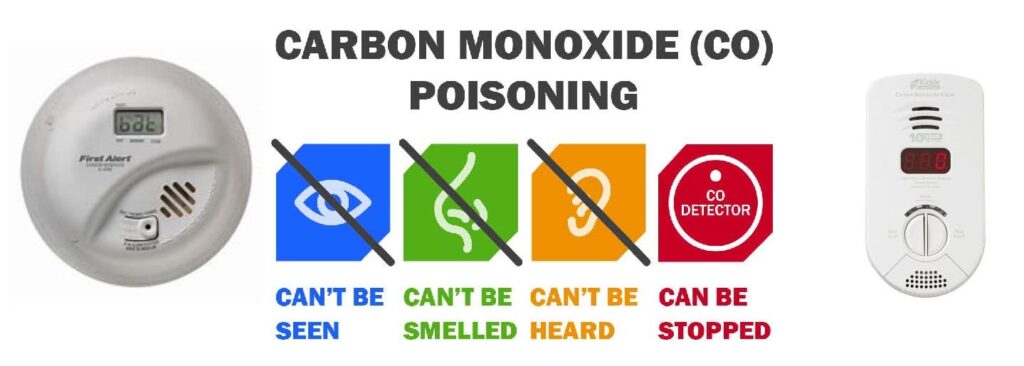Most homes have a smoke detector. Does your home have a Carbon Monoxide Detector? Often called the invisible killer, carbon monoxide (CO) is an odorless, colorless gas created when fuels (such as gasoline, wood, coal, natural gas, propane, oil, and methane) burn incompletely. In the home, heating and cooking equipment that burn fuel are potential sources of carbon monoxide. Vehicles or generators running in an attached garage can also produce dangerous levels of carbon monoxide.
CO alarms should be installed in a central location outside each sleeping area and on every level of the home and in other locations where required by applicable laws, codes or standards. For the best protection, interconnect all CO alarms throughout the home. When one sounds, they all sound.
Follow the manufacturer’s instructions for placement and mounting height Choose a CO alarm that is listed by a qualified testing laboratory and call your local fire department’s non-emergency number to find out what number to call if the CO alarm sounds.
If your CO alarm sounds, immediately move to a fresh air location outdoors. Call 911 and make sure everyone who was inside the house is accounted for. Call for help from a fresh air location and stay there until emergency personnel declare that it is safe to re-enter the home.
To learn the warning signs of carbon monoxide poisoning or where to place CO detectors in your home, please call the Pinal Rural Fire District at 520-465-5300.

